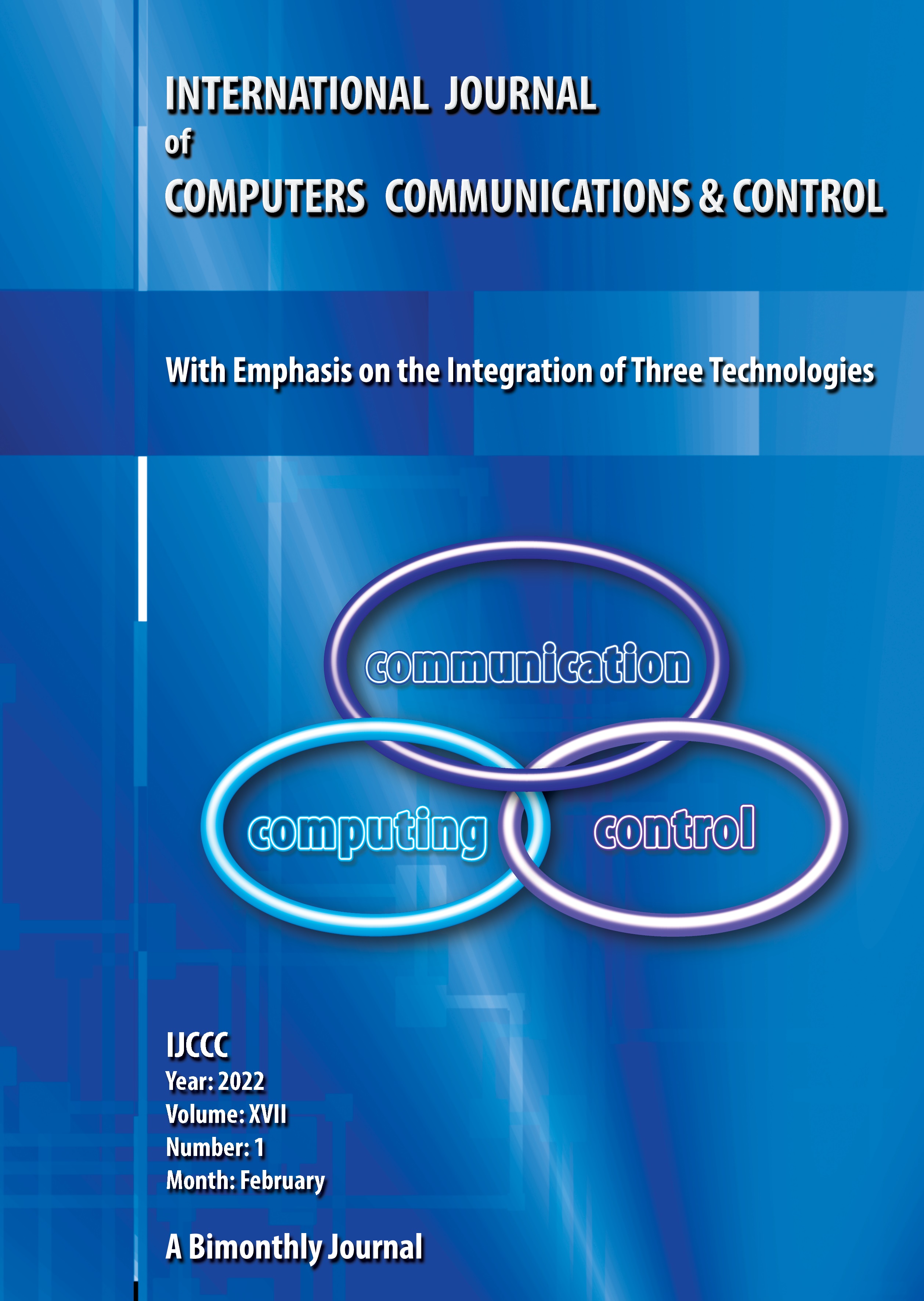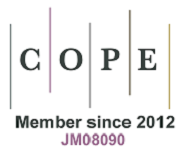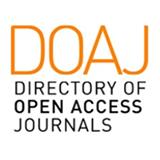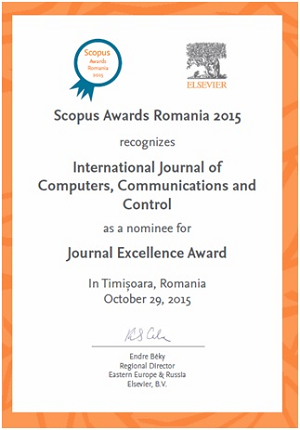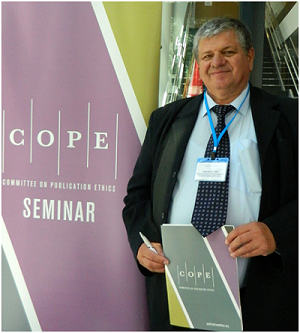Multi-Objective Model to Improve Network Reliability Level under Limited Budget by Considering Selection of Facilities and Total Service Distance in Rescue Operations
DOI:
https://doi.org/10.15837/ijccc.2022.1.4573Keywords:
Facility selection, Reinforce edges, Minimal edge cut, Path, Network reliability levelAbstract
Sudden disasters may damage facilities, transportation networks and other critical infrastructures, delay rescue and bring huge losses. Facility selection and reliable transportation network play an important role in emergency rescue. In this paper, the reliability level between two points in a network is defined from the point of view of minimal edge cut and path, respectively, and the equivalence of these two definitions is proven. Based on this, a multi-objective optimization model is proposed. The first goal of the model is to minimize the total service distance, and the second goal is to maximize the network reliability level. The original model is transformed into a model with three objectives, and the three objectives are combined into one objective by the method of weighting. The model is applied to a case, and the results are analyzed to verify the effectiveness of the model.
References
[2] Zhang, W. T., Yun, Y. X. Multi-scale accessibility performance of shelters types with diversity layout in coastal port cities: A case study in Nagoya city, Japan. Habitat International, 83: 55-64, 2019. https://doi.org/10.1016/j.habitatint.2018.11.002
[3] Wu, H. Y., Xu, Z. S., Ren, P. J. Addressing site selection for earthquake shelters with hesitant multiplicative linguistic preference relation. Information Sciences, 516: 370-387, 2020. https://doi.org/10.1016/j.ins.2019.12.059
[4] Faas, A. J., Velez, A. L. K., Nowell, B. L., et al. Methodological considerations in Pre- and Post-emergency network identification and data collection for disaster risk reduction: Lessons from wildfire response networks in the American northwest. International Journal of Disaster Risk Reduction, 40: 101260, 2019. https://doi.org/10.1016/j.ijdrr.2019.101260
[5] Liao, H. C., Si, G. S., Xu, Z. S., Fujita, H. Hesitant fuzzy linguistic preference utility set and its application in selection of fire rescue plans. International Journal of Environmental Research and Public Health, 15(4), 664, 2018. https://doi.org/10.3390/ijerph15040664
[6] Goodie, A. S., Sankar, A. R., Doshi, P. Experience, risk, warnings, and demographics: Predictors of evacuation decisions in hurricanes Harvey and Irma. International Journal of Disaster Risk Reduction, 41: 101320, 2019. https://doi.org/10.1016/j.ijdrr.2019.101320
[7] Zhou, L., Xu, Z. S., Wu, X. H., Fujita, H. Emergency decision making for natural disasters: An overview. International Journal of Disaster Risk Reduction, 27: 567-576, 2018. https://doi.org/10.1016/j.ijdrr.2017.09.037
[8] Xu, J. H., Yin, X. Z., Chen, D. C., et al. Multi-criteria location model of earthquake evacuation shelters to aid in urban planning. International Journal of Disaster Risk Reduction, 20: 51-62, 2016. https://doi.org/10.1016/j.ijdrr.2016.10.009
[9] Men, J. K., Jiang, P., Zheng, S., et al. A multi-objective emergency rescue facilities location model for catastrophic interlocking chemical accidents in chemical parks. IEEE Transactions on Intelligent Transportation Systems, 21(11): 4749 -4761, 2020. https://doi.org/10.1109/TITS.2019.2946209
[10] Hakimi, S. L. Optimum locations of switching centers and the absolute centers and medians of a graph. Operations Research, 12(3): 450-459, 1964. https://doi.org/10.1287/opre.12.3.450
[11] Berman, O., Krass, D., Menezes, M. B. C. Facility reliability issues in network p-Median problems: Strategic centralization and co-Location effects. Operations Research, 55(2): 332-350, 2007. https://doi.org/10.1287/opre.1060.0348
[12] Coutinho-Rodrigues, J., Tralhão, L., Alí§ada-Almeida, L. Solving a location-routing problem with a multiobjective approach: The design of urban evacuation plans. Journal of Transport Geography, 22(2): 206-218, 2012. https://doi.org/10.1016/j.jtrangeo.2012.01.006
[13] Rabta, B., Wankmüller, C., Reiner, G. A drone fleet model for last-mile distribution in disaster relief operations. International Journal of Disaster Risk Reduction, 28: 107-112, 2018. https://doi.org/10.1016/j.ijdrr.2018.02.020
[14] Trivedi, A., Singh, A. A hybrid multi-objective decision model for emergency shelter location-relocation projects using fuzzy analytic hierarchy process and goal programming approach. International Journal of Project Management, 35(5): 827-840, 2017. https://doi.org/10.1016/j.ijproman.2016.12.004
[15] Bai, X. J. Two-stage multiobjective optimization for emergency supplies allocation problem under integrated uncertainty. Mathematical Problems in Engineering, 2016. https://doi.org/10.1155/2016/2823835
[16] Lee. S. H. Reliability evaluation of a flow network. IEEE Transactions on Reliability, R-29(1): 24-26, 1980. https://doi.org/10.1109/TR.1980.5220695
[17] Arunkumar, S., Lee, S. H. Enumeration of all minimal cut-sets for a node pair in a graph. IEEE Transactions on Reliability, R-28(1): 51-55, 1979. https://doi.org/10.1109/TR.1979.5220473
[18] Lin, P. M., Leon, B. J., Huang, T. C. A new algorithm for symbolic system reliability analysis. IEEE Transactions on Reliability, R-25(1): 2-15, 1976. https://doi.org/10.1109/TR.1976.5214942
[19] Aggarwal, K. K., Gupta, J. S., Misra, K. B. A simple method for reliability evaluation of a communication system. IEEE Transactions on Communications, 23(5): 563-566, 1975. https://doi.org/10.1109/TCOM.1975.1092838
[20] Lin, Y. K., Chen, S. G. A maximal flow method to search for d-MPs in stochastic-flow networks. Journal of Computational Science, 22: 119-125, 2017. https://doi.org/10.1016/j.jocs.2017.09.009
[21] Xue, J. On multistate system analysis. IEEE Transactions on Reliability, R-34(4): 329-337, 1985. https:// doi.org/ 10.1109/TR.1985.5222178. https://doi.org/10.1109/TR.1985.5222178
[22] Chen, S. G., Lin, Y. K. Search for all minimal paths in a general large flow network. IEEE Transactions on Reliability, 61(4): 949-956, 2012. https://doi.org/10.1109/TR.2012.2220897
[23] Yeh, W. C. A simple algorithm to search for all d-MPs with unreliable nodes. Reliability Engineering & System Safety, 73(1): 49-54, 2001. https://doi.org/10.1016/S0951-8320(01)00032-1
[24] Zuo, M. J., Tian, Z. and Huang, H. Z. An efficient method for reliability evaluation of multistate networks given all minimal path vectors. IIE Transactions, 39(8): 811-817, 2007. https://doi.org/10.1080/07408170601013653
[25] Chen, S. G., Lin, Y. K. Searching for d-MPs with fast enumeration. Journal of Computational Science, 17(1): 139-147, 2016. https://doi.org/10.1016/j.jocs.2016.05.011
[26] Alkaff, A. Discrete time dynamic reliability modeling for systems with multistate components. Reliability Engineering & System Safety, 209: 107462, 2021. https://doi.org/10.1016/j.ress.2021.107462
[27] Yeh, W. C. A quick BAT for evaluating the reliability of binary-state networks. Reliability Engineering & System Safety, 216: 107917, 2021. https://doi.org/10.1016/j.ress.2021.107917
[28] Huang, D. H., Huang, C. F., Lin, Y. K. A binding algorithm of lower boundary points generation for network reliability evaluation. IEEE Transactions on Reliability, 69(3): 1087-1096, 2020. https://doi.org/10.1109/TR.2019.2924448
[29] Khanna, G., Chaturvedi, S. K., Soh, S. Two-terminal reliability analysis for time-evolving and predictable delay-tolerant networks. Recent Advances in Electrical & Electronic Engineering, 13(2): 236-250, 2020. https://doi.org/10.2174/2213111607666190215121814
[30] Garg, M., Smith, J. C. Models and algorithms for the design of survivable multicommodity flow networks with general failure scenarios. Omega, 36(6): 1057-1071, 2008. https://doi.org/10.1016/j.omega.2006.05.006
[31] Lee, H. W., Lee, K., Modiano, E. Maximizing reliability in WDM networks through lightpath routing. IEEE/ACM Transactions on Networking, 22(4): 1052-1066, 2014. https://doi.org/10.1109/TNET.2013.2266666
[32] Ahmadi, M., Seifi, A., Tootooni, B. A humanitarian logistics model for disaster relief operation considering network failure and standard relief time: A case study on San Francisco district. Transportation Research Part E, 75: 145-163, 2015. https://doi.org/10.1016/j.tre.2015.01.008
[33] Migov, D. A. Vertex decomposition to calculate the network probabilistic connectivity. Prikladnaya Diskretnaya Matematika, 47: 62-86, 2020. https://doi.org/10.17223/20710410/47/6
[34] Horner, M. W., Widener, M. J. The effects of transportation network failure on people's accessibility to hurricane disaster relief goods: A modeling approach and application to a Florida case study. Natural Hazards, 59(3): 1619-1634, 2011. https://doi.org/10.1007/s11069-011-9855-z
[35] Zhang, Z. Y., Shao, F, M., Zhang, N., et al. Maximizing k-Terminal network reliability in some sparse graphs. IEEE/ACM Transactions on Networking, 29(1): 190-202, 2021. https://doi.org/10.1109/TNET.2020.3030819
[36] Yu, W. Y. Reachability guarantee based model for Pre-positioning of emergency facilities under uncertain disaster damages. International Journal of Disaster Risk Reduction, 42: 101335, 2020. https://doi.org/10.1016/j.ijdrr.2019.101335
[37] Peeta, S., Salman, F. S., Gunnec, D., Viswanath, K. Pre-disaster investment decisions for strengthening a highway network. Computers & Operations Research, 37(10): 1708-1719, 2010. https://doi.org/10.1016/j.cor.2009.12.006
[38] Amin, S., Tamima, U., Amador, L. Optimal pavement management: Resilient roads in support of emergency response of cyclone affected coastal areas. Transportation Research Part A: Policy and Practice, 119: 45-61, 2019. https://doi.org/10.1016/j.tra.2018.11.001
[39] Vahdani, B., Veysmoradi, D., Shekari, N., Mousavi, S. M. Multi-objective, multi-period location-routing model to distribute relief after earthquake by considering emergency roadway repair. Neural Computing & Applications, 30(3): 835-854, 2018. https://doi.org/10.1007/s00521-016-2696-7
[40] Hu, S. L., Han, C. F., Meng, L. P. Stochastic optimization for investment in facilities in emergency prevention. Transportation Research Part E, 89: 14-31, 2016. https://doi.org/10.1016/j.tre.2016.02.006
[41] Filip, F. G. Decision support and control for large-scale complex systems. Annual Reviews in Control, 32(1): 61-70, 2008. https://doi.org/10.1016/j.arcontrol.2008.03.002
[42] Filip, F. G., Zamfirescu, C. B., Ciurea, C. Computer-supported collaborative decision-making. Springer, 2017. http://link.springer.com/book/10.1007/978-3-319-47221-8. https://doi.org/10.1007/978-3-319-47221-8
Additional Files
Published
Issue
Section
License
ONLINE OPEN ACCES: Acces to full text of each article and each issue are allowed for free in respect of Attribution-NonCommercial 4.0 International (CC BY-NC 4.0.
You are free to:
-Share: copy and redistribute the material in any medium or format;
-Adapt: remix, transform, and build upon the material.
The licensor cannot revoke these freedoms as long as you follow the license terms.
DISCLAIMER: The author(s) of each article appearing in International Journal of Computers Communications & Control is/are solely responsible for the content thereof; the publication of an article shall not constitute or be deemed to constitute any representation by the Editors or Agora University Press that the data presented therein are original, correct or sufficient to support the conclusions reached or that the experiment design or methodology is adequate.
